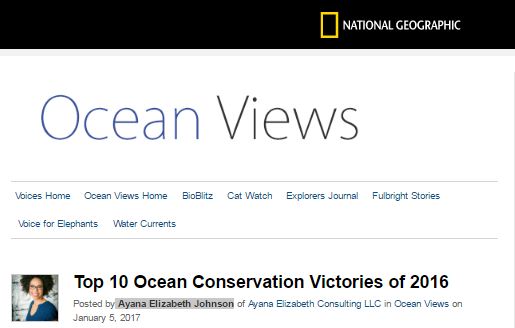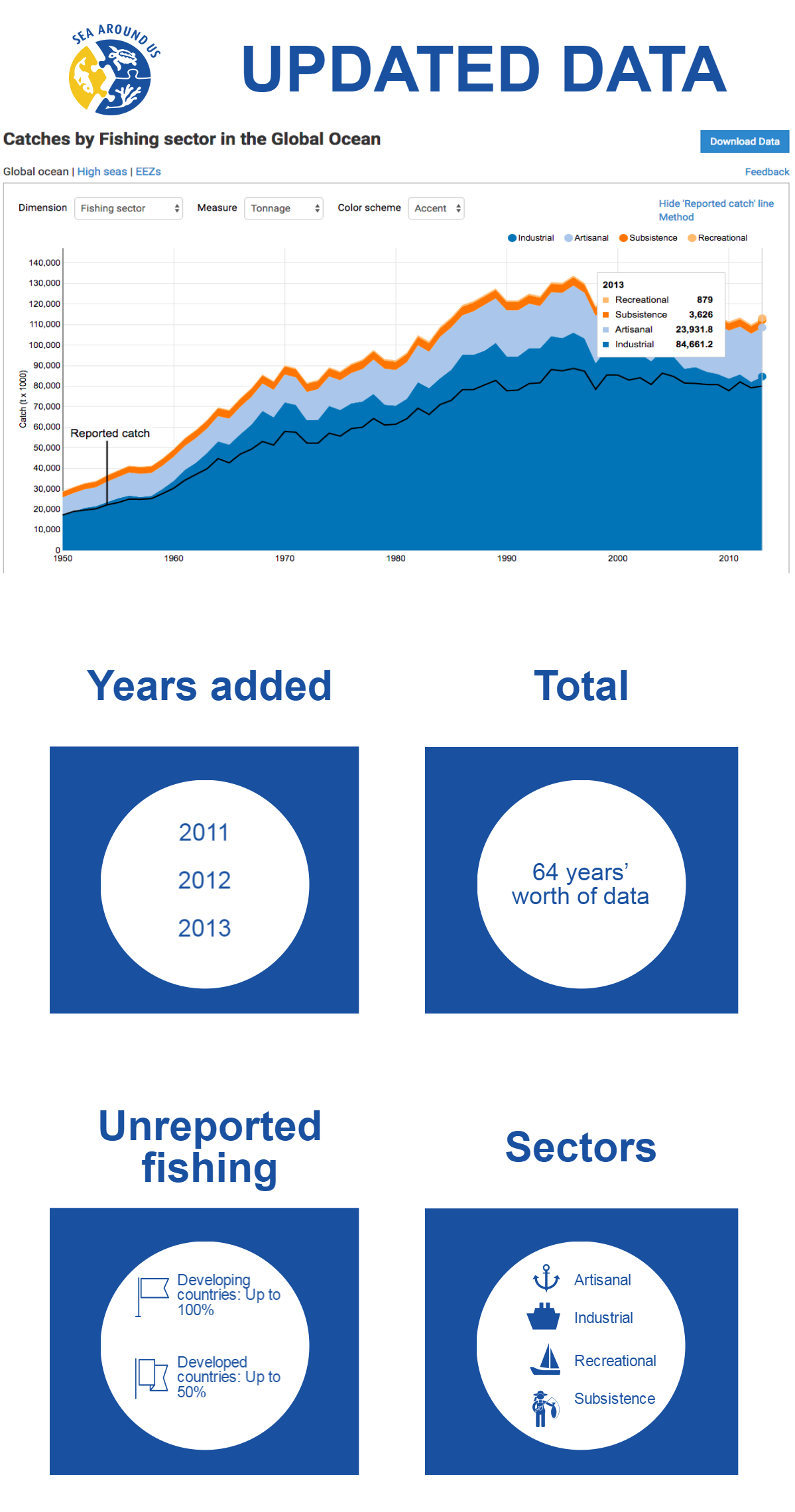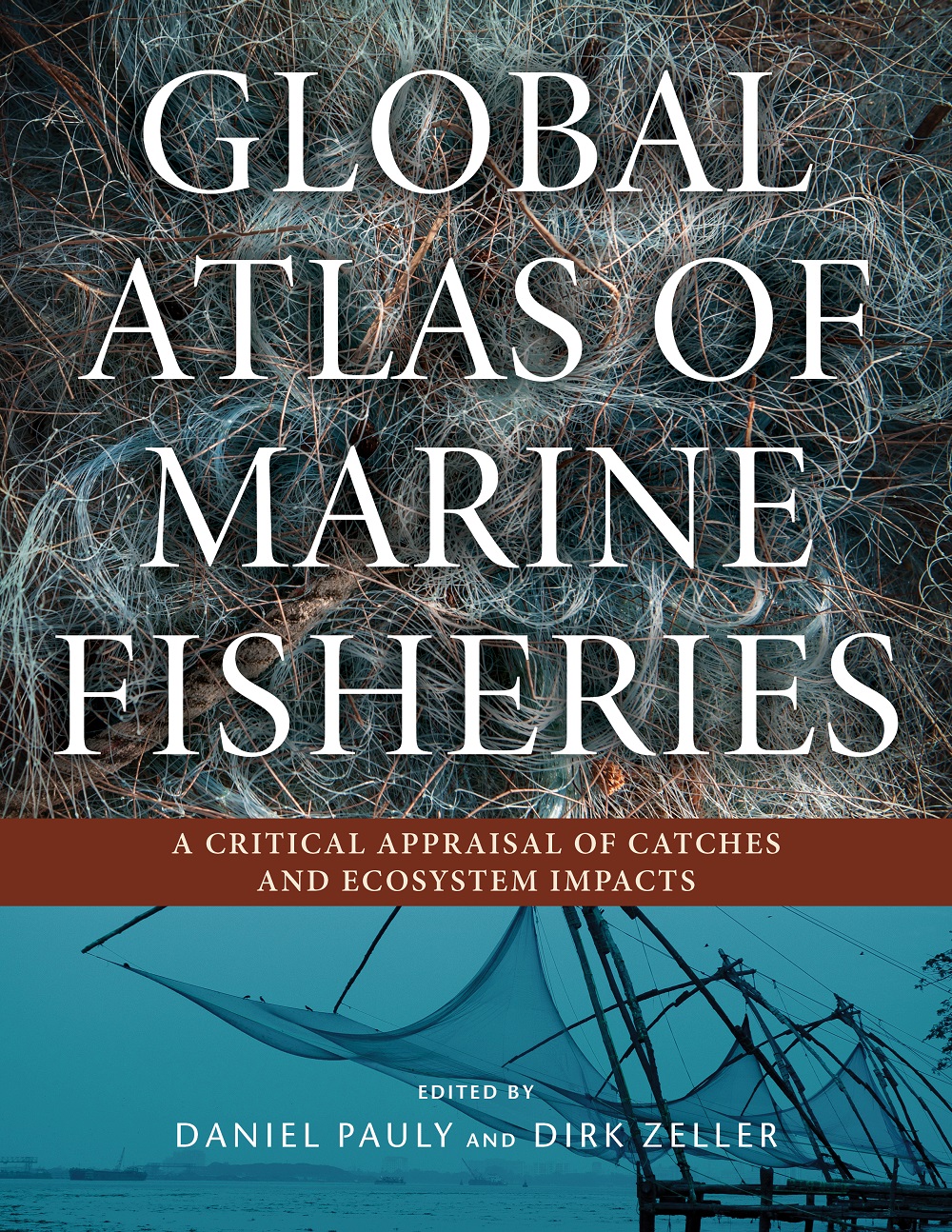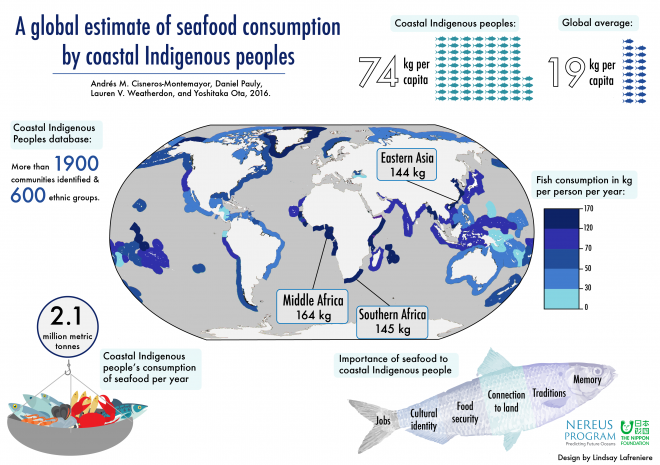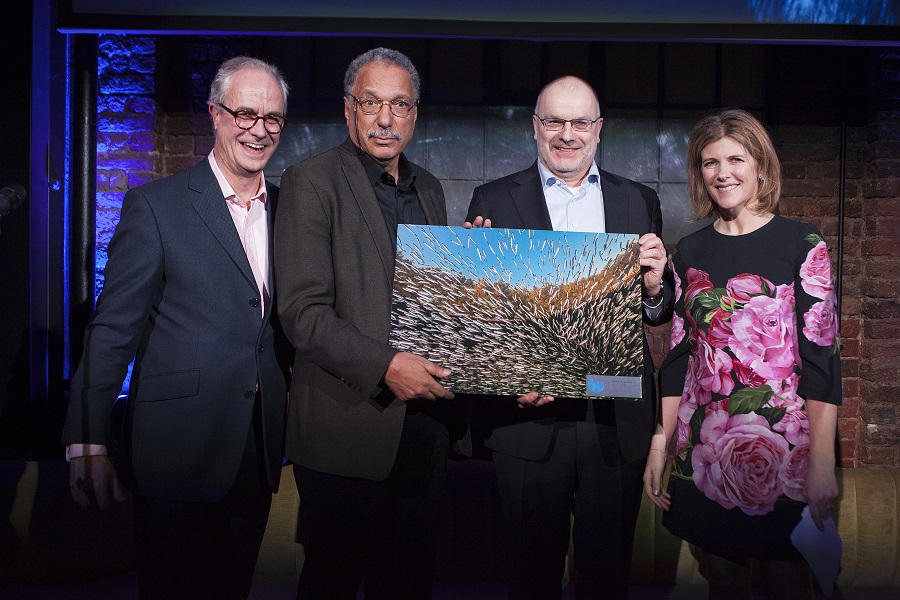
Charles Clover, Daniel Pauly, Dirk Zeller, and Sacha Bonsor. Photo by Boat International.
During a ceremony held at London’s “hottest place,” Restaurant Ours, the Sea Around Us leading team, Dr. Daniel Pauly and Dr. Dirk Zeller, received the Ocean Award in the Science category for their contributions to marine conservation and ocean health through the publication of the Nature Communications paper “Catch reconstructions reveal that global marine fisheries catches are higher than reported and declining” and the Global Atlas of Marine Fisheries.
In these two publications, the scientists based at the University of British Columbia’s Institute for the Oceans and Fisheries reveal, among many other things, that global marine fisheries catches have been declining, on average, by 1.2 million metric tons every year since 1996 due to overfishing.


